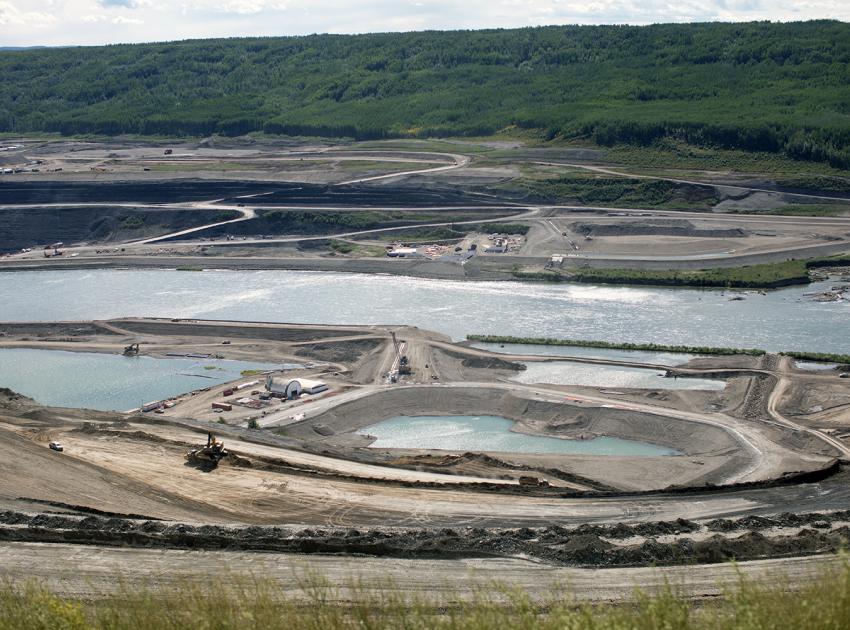Premier John Horgan has announced his government would continue building the Site C dam, increasing the project budget to $10.7 billion from $8.8 billion.
Work should never have started under the previous government, Horgan said, but stopping now would would mean writing off $3.9 billion, the cost of construction to date and remediating the site.
So what happens now?
For starters, Horgan announced a new oversight panel and plans to invest revenue from Site C’s electricity in agriculture and food security. He also promised to listen to Treaty 8 First Nations’ concerns about specific sacred sites and burial grounds affected by Highway 29 realignment plans. And the government will increase the number of apprentices on site, something building trades unions have been calling for.
On the ground, work will expand in the Peace River Valley. Construction has continued on the dam, but it was limited because no new permits were issued during the BC Utilities Commission review. As permits are issued and contracts awarded work will on the site will increase.
Families who faced expropriation to make way for the project had a reprieve during the review. The expropriations will resume according to BC Hydro’s project schedule. It has been an emotional, drawn out fight for many of those families.
West Moberly and Prophet River First Nations have consistently opposed Site C in court and are considering filing a new civil lawsuit to address infringement of treaty rights. Previous cases only challenged a lack of consultation, so the courts have never heard arguments on treaty infringement by BC Hydro and the government.
“They have to be able to justify the infringement. We don’t have the ability to say no, so they say, but what we do have is the ability to protect the treaty,” West Moberly Chief Roland Willson said.
“They have to be able to justify the impact of the development. And the BCUC said, well there is no need for this power. That’s not justified infringement. And that’s what the court will decide.”
The suit has not been filed, but Willson said their lawyers estimate a $1-billion damage claim, based on the $225 million awarded to the James Bay Cree in a 1973 case against Hydro Québec.
The decision’s political impact will be seen in coming weeks and months.
Opposition to Site C has been strong throughout the province, with some NDP members threatening to leave the party if the project was approved.
Jackie Larkin is 72 and has been donating to and voting and volunteering for the NDP since she was 19. In an open letter to party leadership last week, Larkin vowed to throw her considerably energy against the New Democrats if they went ahead with Site C.
“I haven’t always agreed with [the NDP], but I have always voted for and campaigned for them. Never before did I feel there was a moment where I’d have to say this is the end,” she said in an interview last week before the decision was announced. “And I’m not the only one.” Larkin confirmed Monday that she will leave the party.
“I’m part of the older generation who has become increasingly committed to environmental issues, but there’s this whole generation of younger people who are either in or are looking to the NDP,” she added. “Many of those younger people have been actively involved in protesting Site C. “
Richmond Councillor Harold Steves also expects many NDP members to leave the party over this decision, recalling the loss of members over its support for clearcut logging beginning around 1978. The largest number of defections came in 1993 when many members left the party during a battle over clearcut logging in Clayoquot Sound.
“Literally thousands of NDP members quit and [supported] the Green Party. So if it happens again, those that didn’t quit, I think are on the verge of doing the same thing over again,” Steves said. The Green Party, which had been founded in 1983, received an influx of support from disgruntled NDP members, including its second leader, Stuart Parker.
Most unions support Site C going forward, even if they agree it probably shouldn’t have been started.
But Steves says union leaders are out of touch with their members, many of whom supported cancelling Site C. An online petition late last week gathered almost 800 signatures: most people identified as NDP members and many also indicated they were trades union members.
“It’s going to be a landmark decision if the NDP goes against what I think is the majority opinion within the party. There are going to be problems in the future,” Steves predicted before the decision was announced.
Larkin, who said she generally supports unions, was calling on unions to say no the dam, despite the opportunity for jobs, because of the negative impacts on people in the area and the environment. “I wish they’d have a little more courage.”
Now that the project will proceed, labour unions will have other concerns.
Unlike other major infrastructure jobs in the past, Site C did not have a “project labour agreement” establishing the terms of employment, including a ratio of apprentice workers to journeymen. Building trades unions have criticized the Christian Labour Association of Canada (CLAC), which represents the majority of workers on the job site, for having too few apprentices.
Work site apprenticeship programs are an important part of developing the province’s skilled trades workforce, say representatives from the Operating Engineers and BC Building Trades unions.
“I hate seeing dams build,” said Herb Conat, business representative at the Operating Engineers union. “But if they’re going to be built, they should be built by us. Dams in the past were built by people from this province, they were projects people were proud of, and that benefitted the province.”
Conat and other union representatives have criticized BC Hydro, project manager Peace River Hydro Partners and the CLAC for the hiring process, saying the local jobs fairs were a farce and that too many out of province workers have been hired.
CLAC and BC Hydro continue to say approximately 80 per cent of the workforce from British Columbia, but Conat doesn’t think they have strict requirements for how long someone needs to live in B.C. to qualify as a local.
“I just want more fairness,” Conat said, adding that the lack of apprenticeships and fair hiring is a problem for the future of the province. “I’m scared for my kids. That’s why I do this.”
CLAC representatives say the lower number of apprentices on site was a result of underdeveloped provincial training programs for heavy equipment operators, who currently make up the majority of Site C’s workforce.
The current apprentice is too short, said the union’s B.C. training director Larry Richardson, adding that it has been developing a tiered training program for heavy equipment operators with BC Hydro and the Site C project managers. The terrain is more difficult to work on than standard flat ground, and more rigorous training programs were needed, he said.
Now that Site C will be completed, Richardson said training will allow workers to leave the job with higher level certifications that increase their future opportunities.
Editor's Note: The report was amended Dec. 12 to add information on earlier defections from the NDP over forest policy.
This article was supported by those who generously contributed to the Rafe Mair Memorial Fund for Environmental Reporting on The Tyee. To find out more or contribute, click here.

















Tyee Commenting Guidelines
Comments that violate guidelines risk being deleted, and violations may result in a temporary or permanent user ban. Maintain the spirit of good conversation to stay in the discussion.
*Please note The Tyee is not a forum for spreading misinformation about COVID-19, denying its existence or minimizing its risk to public health.
Do:
Do not: